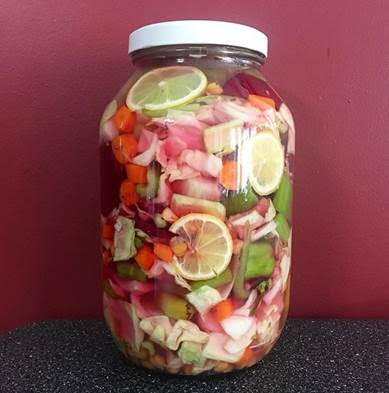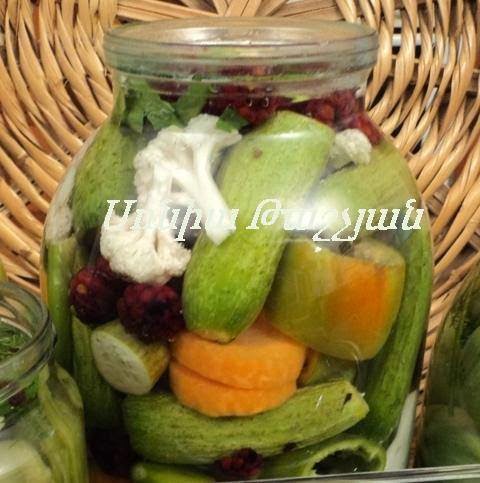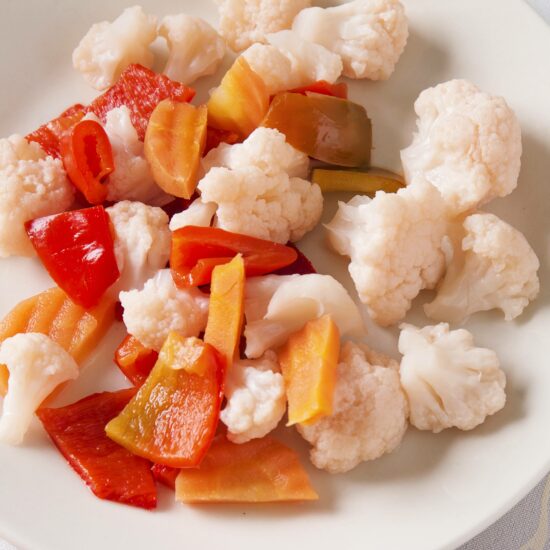Christine Datian contributed the following piece to The Armenian Mirror-Spectator last April, and has offered to share it with The Armenian Kitchen. Thank you, Christine!
Armenians and Middle Easterners have been pickling vegetables (toorshi, tourshi, or torshi) for thousands of years. Some say this method has been a most- effective way of preserving them.
 |
| Lena Tashjian’s Toorshi. |
Not only are homemade assorted pickles simple to make, they can easily be customized. Pickled vegetables can be added to salads, and they make a delicious addition to vegetable platters or served as a lunch or dinner appetizer, says Lena Tashjian, writer, vegan recipe developer, and author of The Vegan Armenian Kitchen Cookbook.
Tashjian is based in Toronto, and Siroon Parseghian, the photographer and creative director, is based in Los Angeles.

Ingredients:
- 1 cup or 1 handful of dried chickpeas
- A few large cloves of garlic, peeled but left whole
- Other optional seasonings: sprigs of parsley, dill, oregano, tarragon, thyme, etc.
- Celery stalks, cut into wedges
- Cauliflower, with florets separated, cut into chunks
- Carrots, cut in half length-wise, then cut into 3 or 4-inch pieces
- Kirby (pickling) cucumbers, sliced
- Jalapenos or chili peppers, sliced (remove seeds if you find it too spicy)
- Cabbage, cored, cut into small chunks
- Green peppers (Italian frying peppers preferred, seeds removed, cut into chunks)
- Crushed red pepper flakes, optional
- Sliced lemon (peel or remove some of the rind to avoid a bitter flavor), optional
Also add: turnips, small eggplants, green tomatoes, whole green beans, and jicama to this recipe. To give vegetables a beautiful color, add a small amount of beetroot, peeled and sliced into discs. Beetroot is often added to Armenian pickles for color, which is similar to how they are made in the Middle East. Beetroot gradually turns everything a deep pink. Toorshi should keep for several months unopened.
Brine:
3 cups of boiled water that has returned to room temperature
1 cup white vinegar
2 tablespoons pickling salt
1/2 teaspoon citric acid
3/4 teaspoon sugar
Preparation:
‘The Vegan Armenian Kitchen Cookbook’ is just $35 each. To order your copy, click here.
See:
https://veganarmeniankitchen.com/product/vegan-armenian-kitchen-cookbook/
https://www.instagram.com/veganarmeniankitchen/.
http://voyagela.com/interview/meet-vegan-armenian-kitchen-cookbook-glendale/.
https://thearmeniankitchen.com/2020/03/olive-and-walnut-salad-shepherds-dinner.html
https://thearmeniankitchen.com/search?q=Vegan+Armenian




Wow, that is a great recipe. I will need to try for sure, since I love fermented vegetables, and they are good for our body.